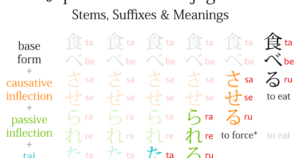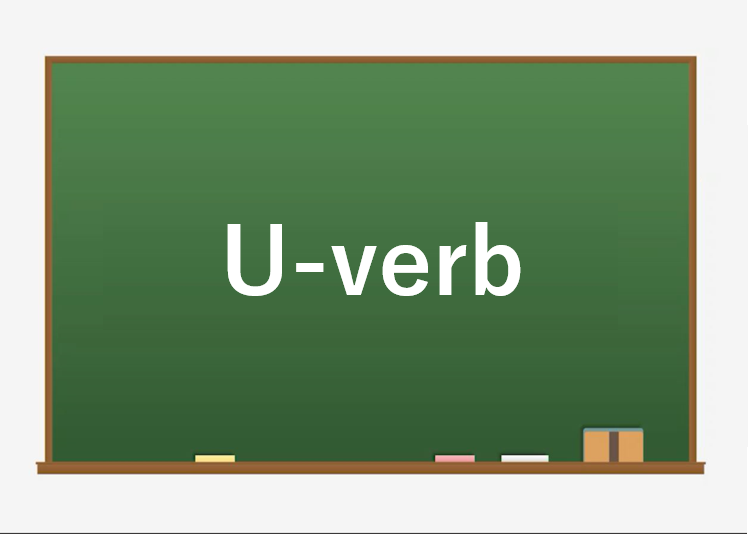U-verb conjugation are summarized in the table.
Example:
yomu(read)
よむ
nomu(drink)
のむ
kiku(listen)
きく
kiru(cut)
きる
-u verbs are formed by adding – u to the end.
The u verb works in the same way as the ru verb. u verbs do not necessarily end with the hiragana “u”. Since the last vowel must be “u,” the last hiragana must be either “ku,” “su,” “tsu,” “nu,” or “ru. The distinction between u and ru verbs is simple.
All verbs ending in u are u verbs except those ending in ru.
However, some u verbs also end in ru. the way to distinguish between verbs ending in ru and u verbs is to look at the vowel before the ending ru. if there is an i or e before ru, it is a ru verb. if there is another vowel before ru, the verb is an uverb. if there is an i or e before ru, it is an uverb. if there is an e before ru, it is an uverb.
If you have any questions, ask them for free! ➡ Japanese Question Form
KEY:
We have 3 kinds of verbs in Japanese. Dictionary form changes to different forms depending on which verbs.
日本語には3種類の動詞があります。どの動詞を使うかによって、辞書の形が変わります。

Frequently Asked Questions

When is the meaning and origin of Umi no hi?
If you spend summers in Japan, you have probably heard of the day called “Sea Day (Umi no hi)”. Well,

Five Okinawan beaches frequented by foreigners
The ocean in Okinawa is so beautiful that it is said to be “just like a tropical beach. For this

Meet new people -新しい人との出会い –
Meet new people Japanese Person 1: こんにちは。はじめまして。 Konnichi wa. Hajimemashite. Hello. Nice to meet you. Person 2: はじめまして。おげんきですか。 Hajimemashite. O-genki desu ka? Nice to

One-step verb -一段動詞 –
The second group of Japanese verbs is called a one-step verb.






